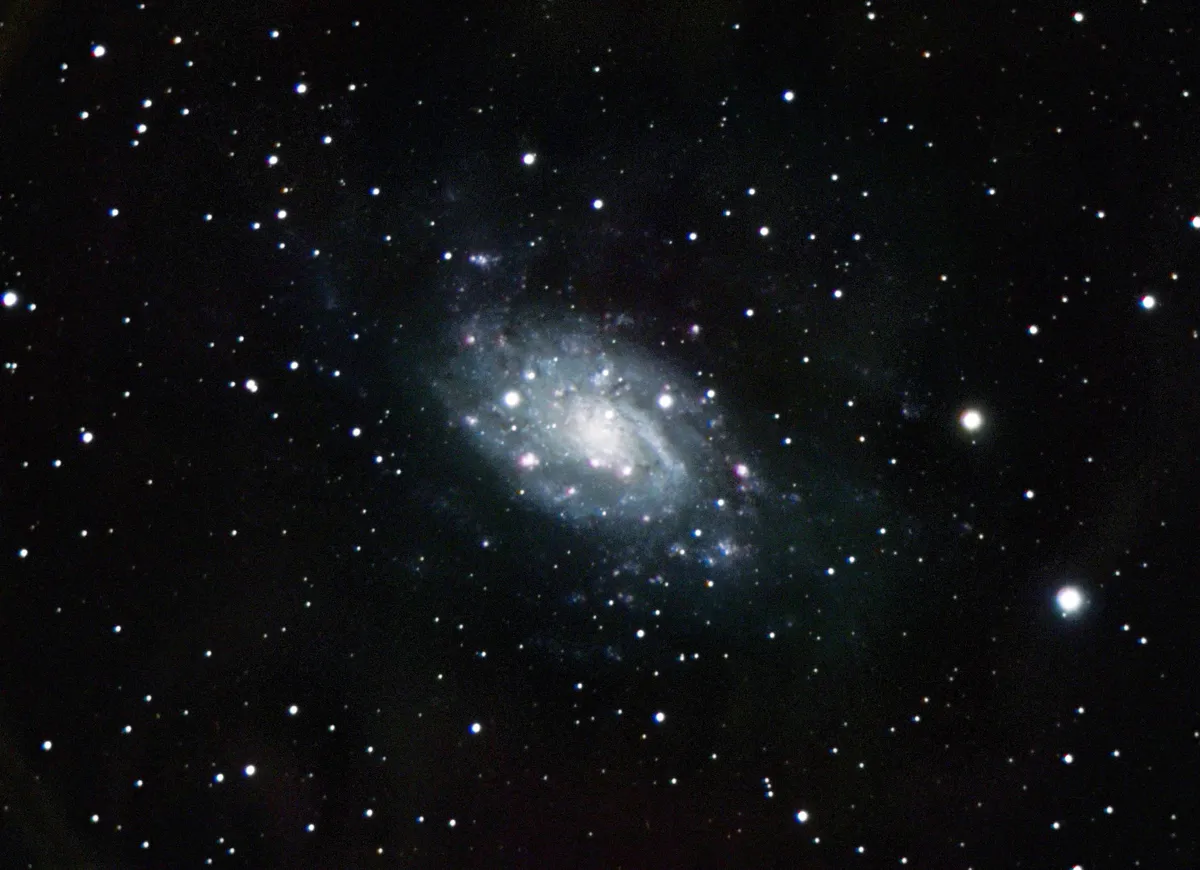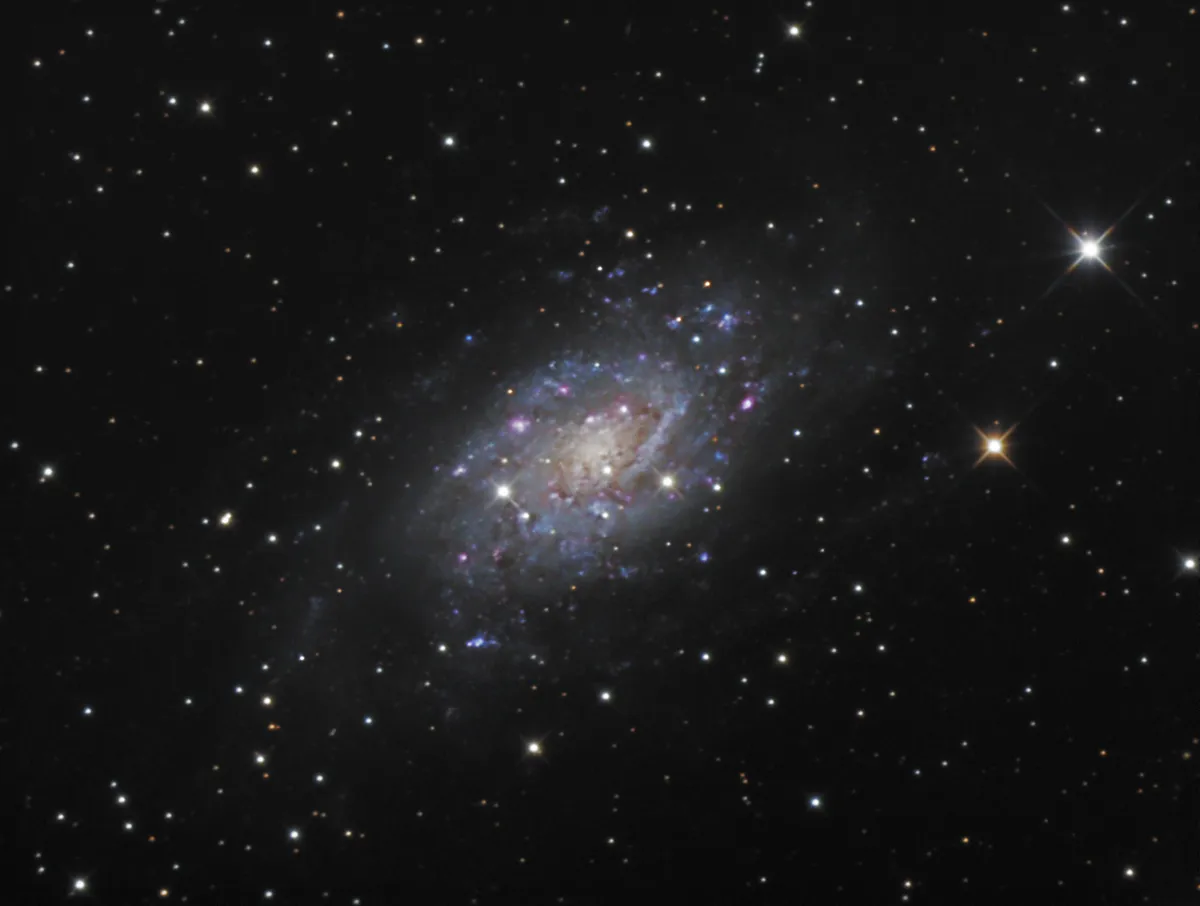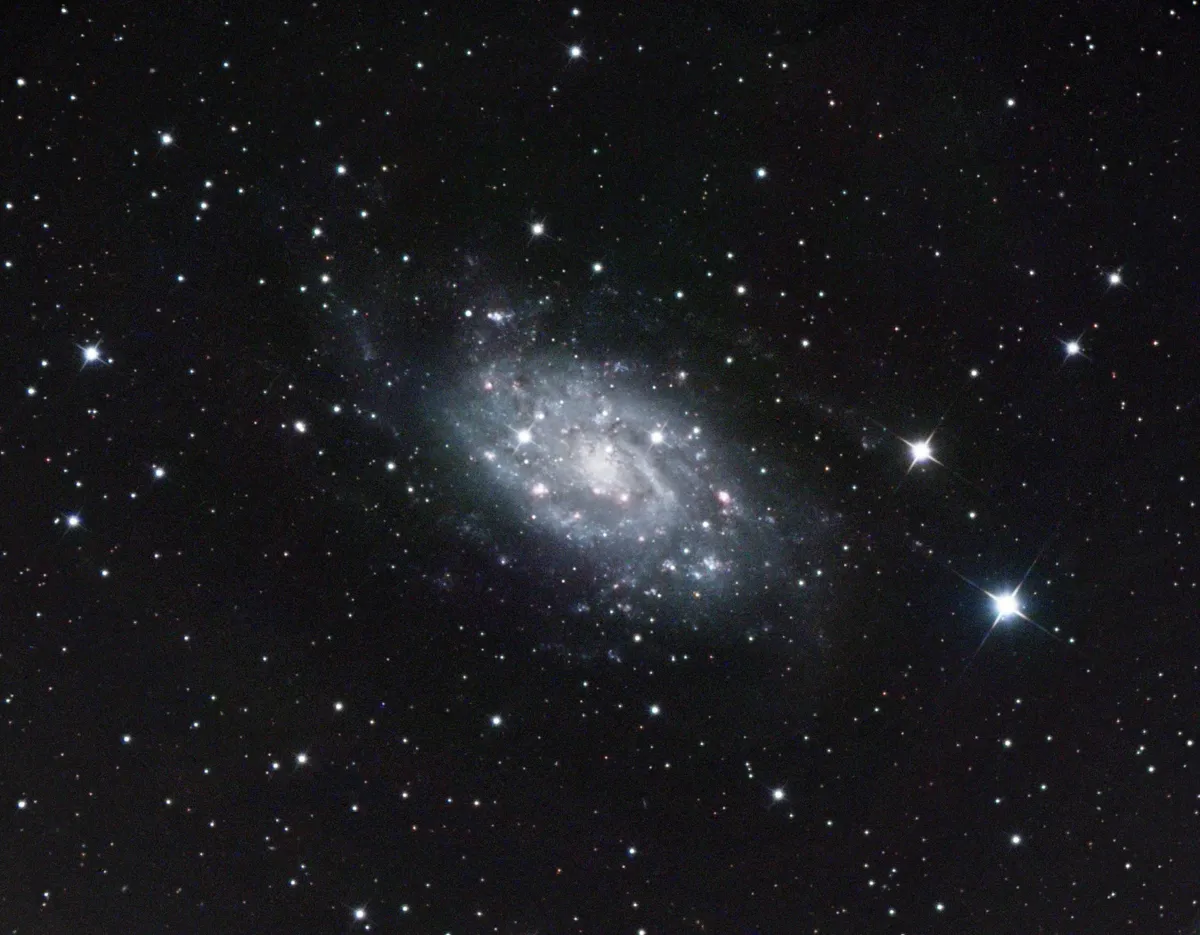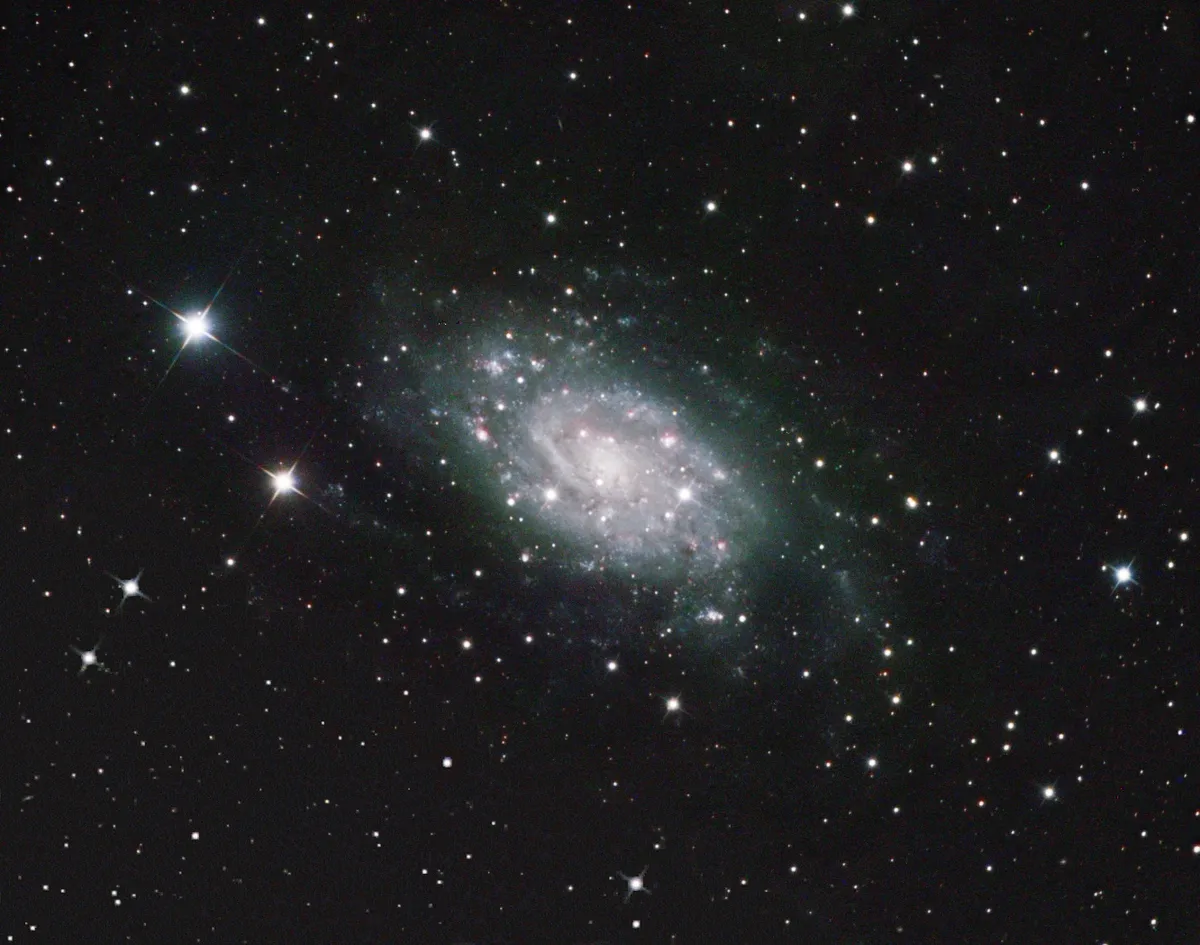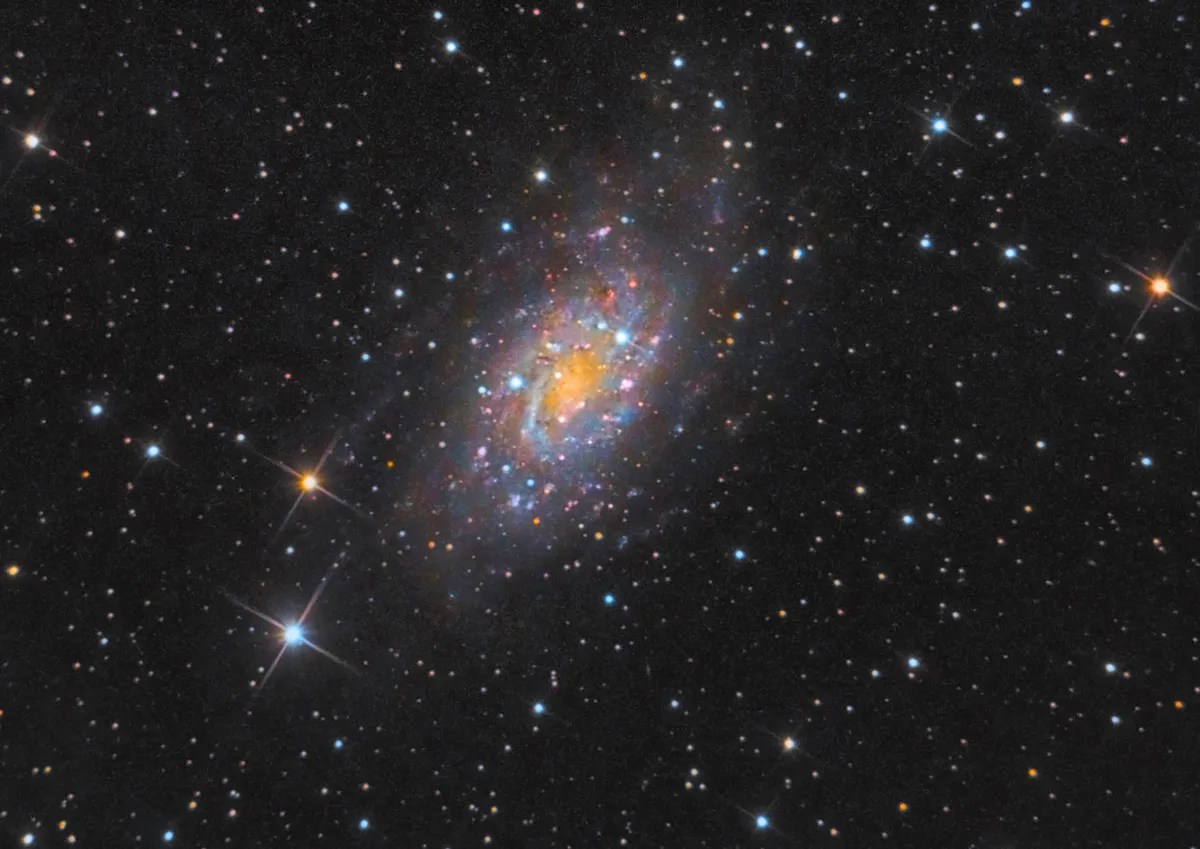Caldwell 7 - also known as NGC 2403 - is a spiral galaxy spanning 80,000 lightyears across, located 10 million lightyears away.
The galaxy can be found in the constellation Camelopardalis, close to the celestial north pole.
Images of Caldwell 7 reveal pink regions of glowing gas that are active star-forming regions of ionised hydrogen.
New-born stars glow scorching bright blue among the dark dust lanes of the galaxy's spiral arms.
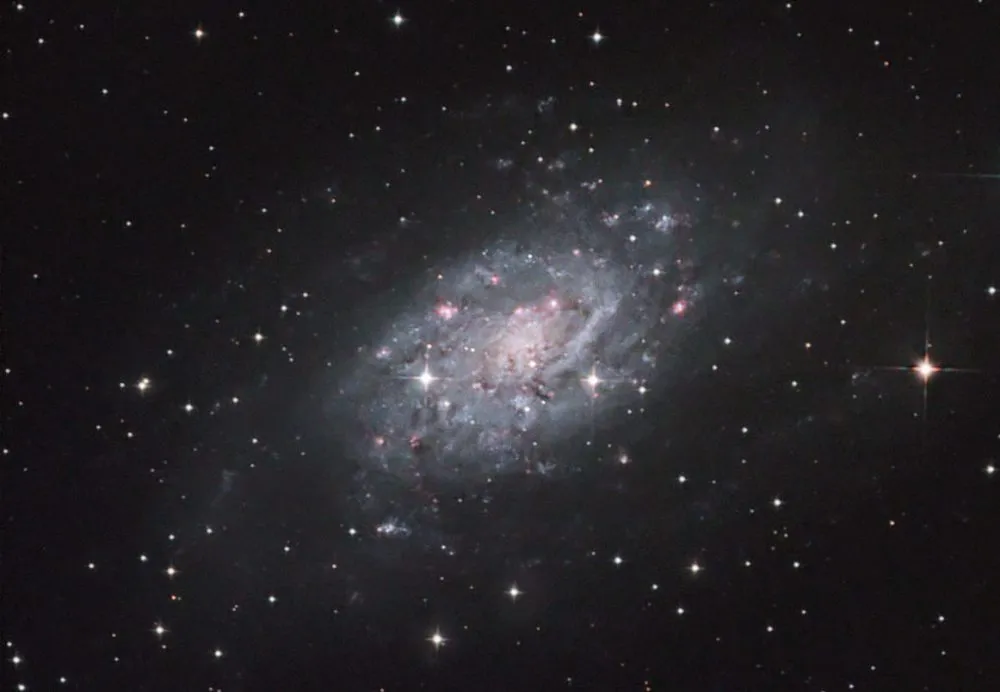
Caldwell 7 was discovered by astronomer William Herschel in 1788, and was added to the famous Caldwell Catalogue of deep-sky objects conceived by Sir Patrick Moore.
For help on how to find the galaxy, consult our guide to the Caldwell Catalogue (it's number 11 on our list).
In 2004, observations with the Hubble Space Telescope revealed something rather interesting occurring in Caldwell 7.
Before and after images showed the sudden brightening of a star, which was identified as a stellar explosion known as a supernova occurring in a star cluster called Sandage 96.
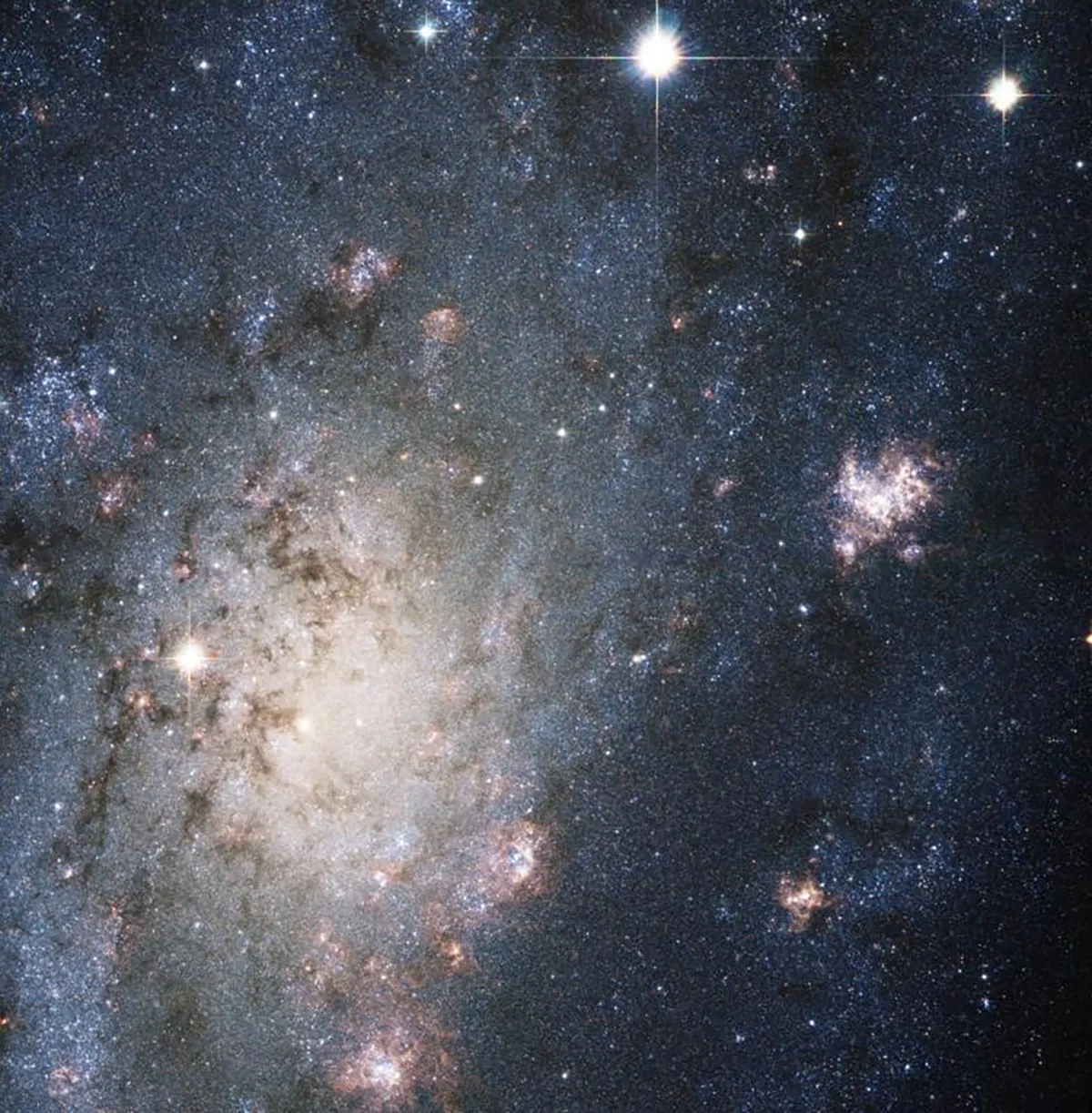
Because the star cluster is so far away, from Hubble's viewpoint in Earth orbit, it appears as though it's a single star.
Below is a selection of images of galaxy Caldwell 7 captured by astrophotographers and BBC Sky at Night Magazine readers.
For advice on photographing a galaxy, read our guide to deep-sky astrophotography or our tutorial on deep-sky image processing.
And don't forget to send us your images or share them with us on Facebook, Twitter or Instagram.
